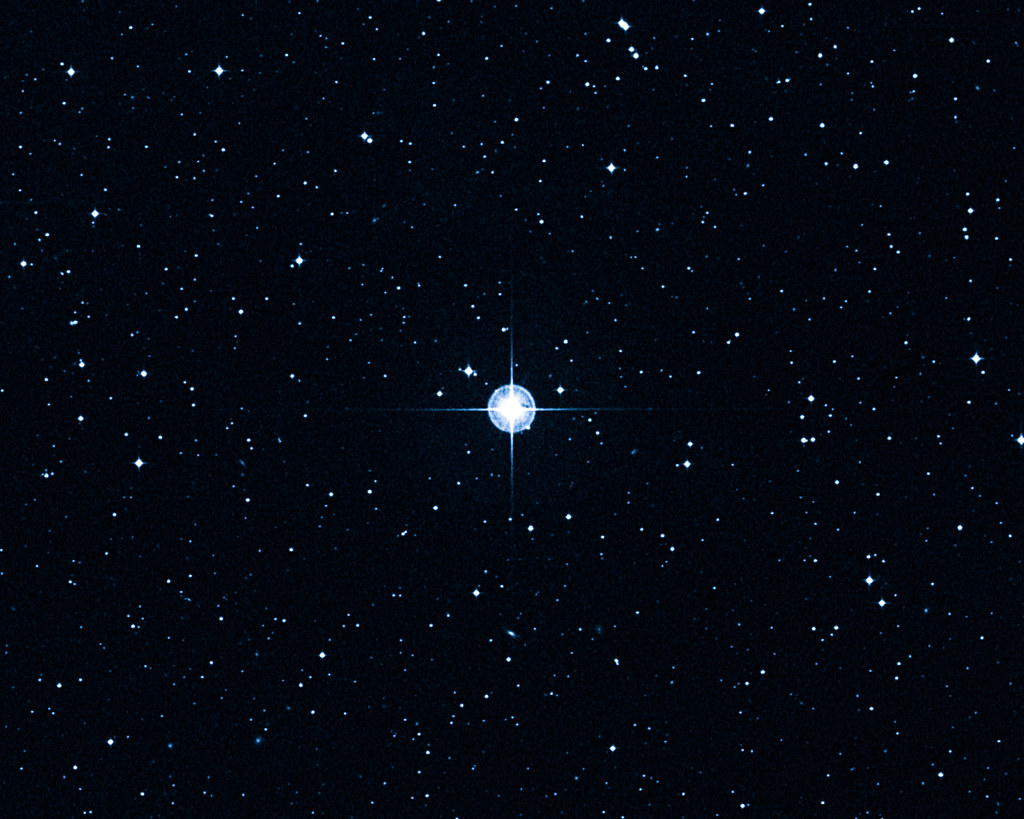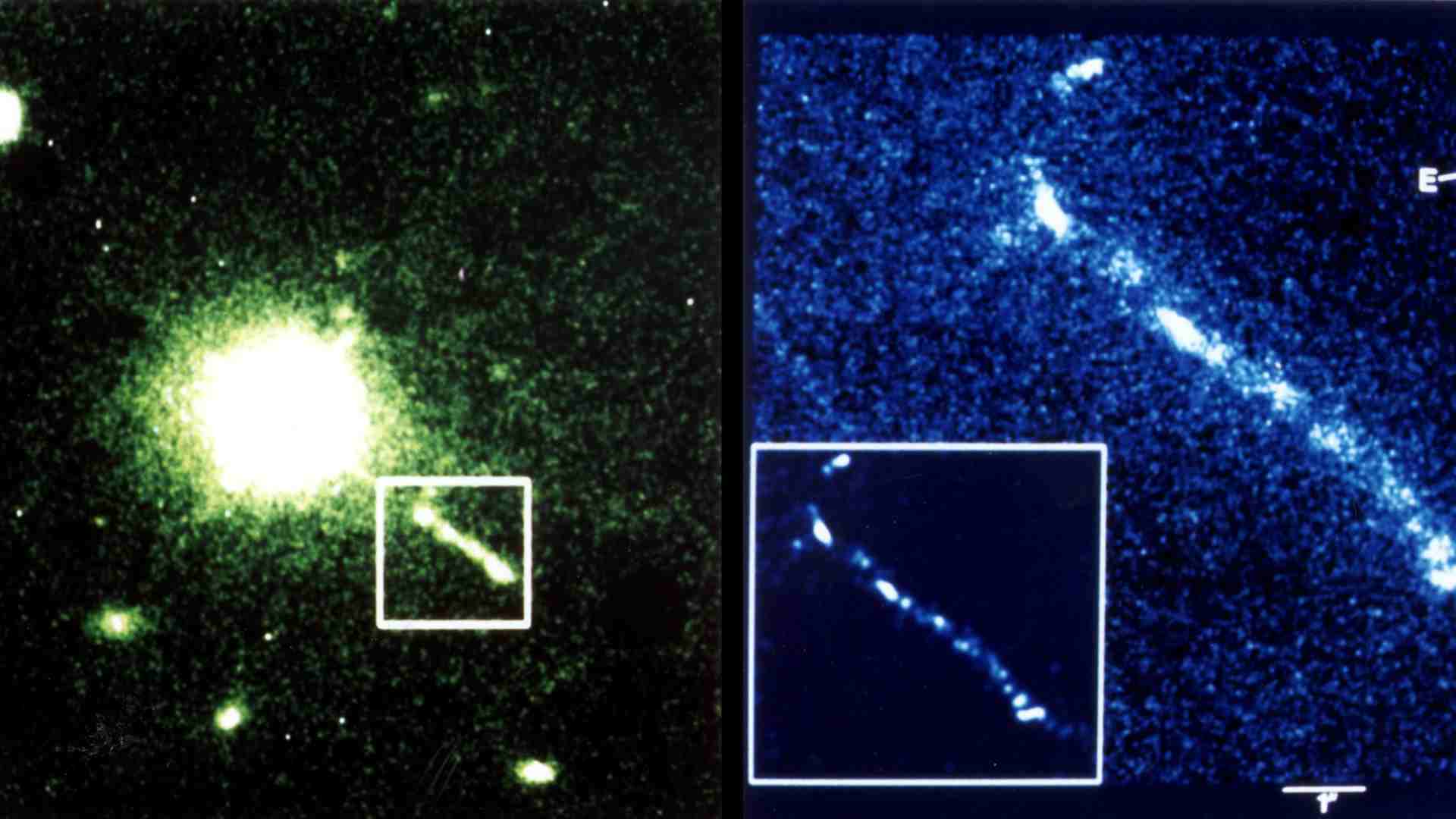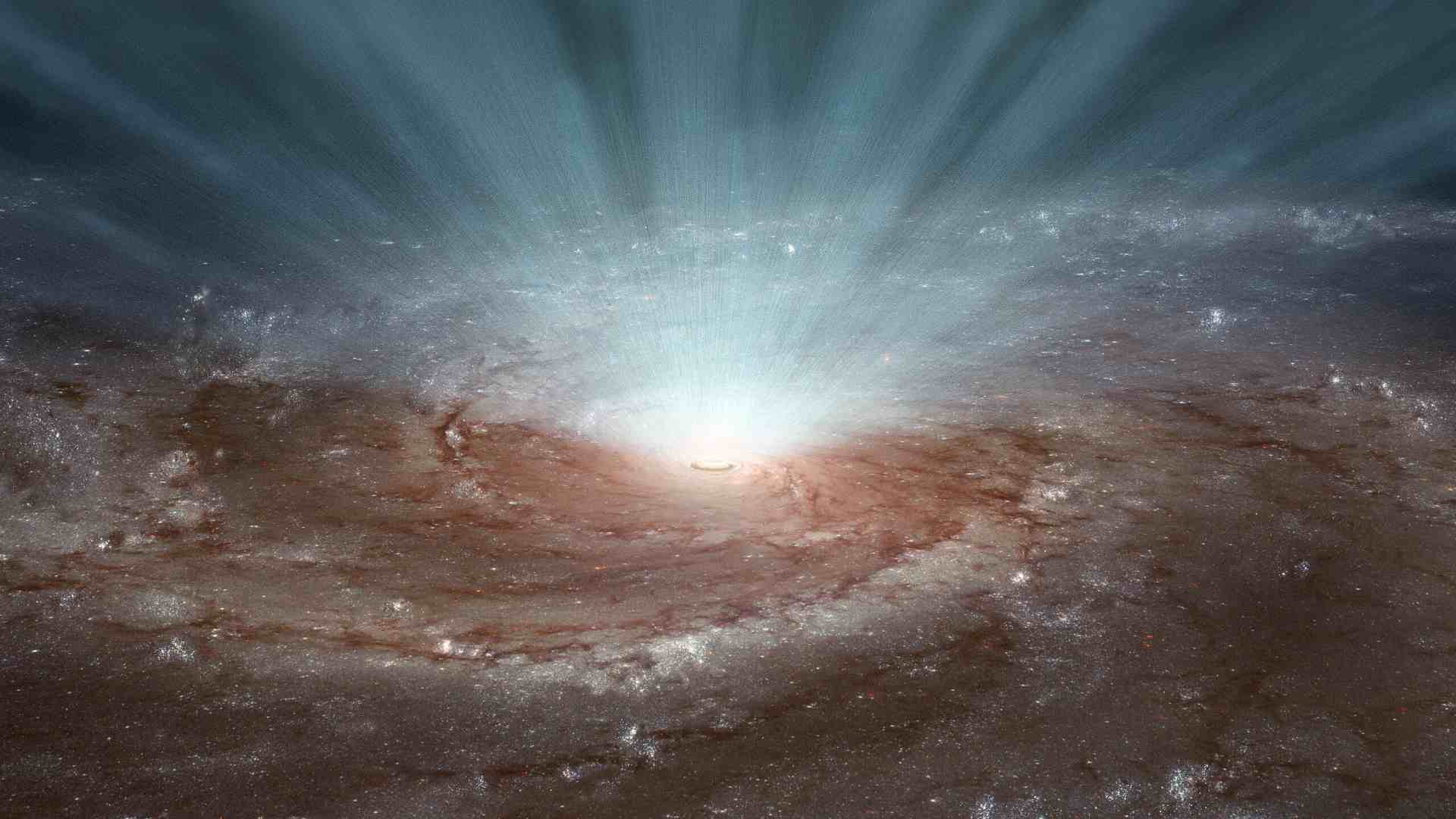Astronomers discovered what they believe is the brightest object in the universe. At the center of the quasar is a black hole that is growing quickly.
The quasar, short for quasi-stellar radio source, is an extremely luminous active galactic nucleus (AGN). Astronomers believe this newly discovered quasar is the brightest object in our universe, but it might not last long.
How Bright is the Quasar?

They are some of the most distant and energetic objects in the observable universe, emitting more light than the Milky Way. That means that the quasar is brighter than hundreds of billions of stars.
While quasars are not odd to find, this newly discovered quasar shines 500 trillion times brighter than our sun. But quasars are not made to last. That’s because of the black hole at the center of it.
A Black Hole Powers the Quasar

Quasars are powered by supermassive black holes at the centers of galaxies. The black hole—which looks like a swirling disk called an accretion disk—creates friction to heat the matter around it to incredibly high temperatures that eventually emit tremendous amounts of radiation across the electromagnetic spectrum.
“We have discovered the fastest-growing black hole known to date. It has a mass of 17 billion suns and eats just over a sun per day,” team leader and Australian National University astronomer Christian Wolf said in a statement. “This makes it the most luminous object in the known universe.”
The Most Violent Place in the Universe

Quasars are important objects for astronomers because they help people understand the evolution of galaxies and the universe. They can also be used to probe the conditions in the early universe, as their light has been traveling for billions of years.
However, the Australian-led team reported in the journal Nature Astronomy says this quasar is “the most violent place that we know in the universe,” (via The Associated Press).
The Quasar Was Unknown Until This Year

The European Southern Observatory spotted the object during a 1980 sky survey. Astronomers previously believed the quasar named J0529-4351 to be a star. It was only identified as a quasar last year.
“It is a surprise that it has remained unknown until today when we already know about a million less impressive quasars. It has literally been staring us in the face until now,” team member and Australian National University scientist, Christopher Onken, said in the statement.
Why Is the Quasar So Bright?

Quasars create violent conditions because of the supermassive black holes that power them. However, it is these conditions that heat the gas and dust to cause the quasar to glow so brightly.
The cosmic titan channels any leftover matter from the disk towards its poles, where it erupts as a jet of particles traveling at the speed of light. This adds to the brightness of the quasar.
The Quasar Is 12 Billion Light-Years Away

However, J0529-4351 stands out as the brightest quasar ever. The observations and computer modeling have determined that the quasar is eating up the equivalent of 370 suns a year. The team needs more information to understand the quasar’s growth rate.
Luckily, our solar system seems safe. The quasar is 12 billion light-years away, and it has been around since the universe’s early days.
Hidden in Plain Sight

“The exciting thing about this quasar is that it was hiding in plain sight and was misclassified as a star previously,” Yale University’s Priyamvada Natarajan, who was not involved in the study, said in an email to the AP.
The discovery shows that the quasar is the brightest ever. The X-shooter spectrograph instrument on the Very Large Telescope (VLT) in the Atacama Desert region of Northern Chile followed up on J0529-4351 to confirm this.
How Does the Quasar Effect What We Know About Space?

The team of astronomers thinks that the supermassive black hole at the heart of this quasar is feeding near the Eddington limit.
The Eddington limit, also known as the Eddington luminosity, refers to the maximum luminosity a star can achieve while maintaining hydrostatic equilibrium. This means it’s the point where the outward pressure of the star’s radiation balances the inward pull of its gravity.
Scientist Are Still Studying the Quasar

Scientists are investigating the quasar J0529-4351 to determine if it is feeding near the Eddington limit. If it is, the intense radiation pressure from the quasar would push away surrounding gas and dust, effectively cutting off its own fuel supply. However, confirming this scenario awaits further investigation.
The upcoming Extremely Large Telescope (ELT), currently under construction in the Atacama Desert, will also investigate J0529-4351.
How Old Is the Quasar?

The astronomers behind the team are excited to find this record-breaking discovery. “Personally, I simply like the chase. For a few minutes a day, I get to feel like a child again, playing treasure hunt, and now I bring everything to the table that I have learned since,” Wolf concluded.
While the VLT can only picture the quasar as a dot in images, scientists are excited to explore the brightest quasar in the upcoming years to study how the object has kept itself alive since the beginning of the universe.
The Oldest Object in the Universe

The universe is estimated to be 13.78 billion years old. However, there are a few other objects that could almost be older than J0529-4351. Astronomers estimate that Methuselah Star, an ancient star, is around 14.2 billion years old, potentially exceeding the universe’s age.
Scientists discovered this star in 2000 after observing the European Space Agency’s (ESA) Hipparcos satellite. While the star’s age predates the universe, there is no exact date of age of existence for these objects.
How are Quasars Formed?

According to Britannica, quasars are formed through a build-up of the black hole at their center which starts to accumulate a high rate of gas.
It is thought that this event can be triggered when a black hole starts to merge with another galaxy. Gas starts swirling at high velocity into the black hole, which makes the process visible from billions of light years away.
Where Did the Term Quasar Come From?

The term quasar is a contraction of two different words, quasi and stellar. By fusing the words together you get the word quasar.
These space objects were termed quasi because the first evidence of them came from 1950s radio-wave emissions and surveys, according to Britannica. The second word, stellar, is another way to say star. Stellar is derived from the late Latin word Stellaris, which is the Latin word for star.
How Long Can Quasars Live?

A quasar does not have a set lifetime, as its luminosity depends on the amount of available fuel that the black hole at its center can suck up.
According to the Swinburne University of Technology, quasars have lifetimes that can vary widely. Typically, a quasar will have a lifetime between 100 million and 1 billion years.
How Much Fuel Do Quasars Burn?

The amount of fuel that a quasar burns will depend on its size, the stage of its life, and the amount of nearby gas materials. When looking at consumption rate on a time scale, a auasar will consume between 1000 and 2000 solar masses of material per year. (via Swinburne University of Technology)
In astronomy, a solar mass is equivalent to the mass of our sun. This means that one Quasar will consume the equivalent of multiple thousands of our sun in material every year.
What Was the First Quasar Discovered?

Originally when they were discovered, quasars were dubbed “quasi-stellar radio sources.” By 1964 after their official identification, the name had undergone the shortening to “quasar.” via (Britannica)
Although quasars were discovered before this time, it was Maarten Schmidt in 1963 who is credited for their identification. via (The New York Times) He was the first astronomer to identify a Quasar called 3C 273. for its distinct patterns and emission lines.
Radiation Pressure

Earlier astronomers were curious why Quasars were so compact compared to other celestial objects in space. Quasars are only a few light- days across. For comparison, the Milky Way galaxy we live in is 100,000 years across, but quasars are so powerful despite their size.
The answer to the question of their compactness has to do with radiation pressure, which keeps the gravity and gases contained. This pressure is what keeps a Quasar from blowing up. (via Britannica)
What is a Double Quasar?

NASA reported in 2023 the discovery of two quasars in the distant universe in the cores of two different galaxies.
These galaxies were undergoing a merging process, with the only indication to NASA instruments of the process being the massive spectacle of light being given off by two quasars. The discovery of double quasars in the early universe is an indication that large galaxies are formed through the merging of smaller ones.
Quasars May Hold the Secrets to the Universe

Despite astronomers knowing a lot about quasars now, they are still seen as mysterious objects, possibly holding clues to the origins of the universe.
Quasars stand out because of their brightness, and their relative age makes them important markers for figuring out what the early universe must have been like. Because some quasars are so far away, they are like time portals that let astronomers gaze into the past of the young universe and trace its evolution from there.
